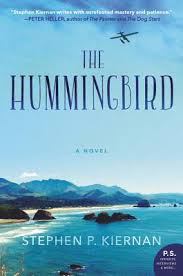
I was excited to learn that Isabel Quintero wrote a new YA book because my students had enjoyed Gabi: A Girl in Pieces so much. (I only use the past tense because I retired; they are most likely still enjoying it.) However, it wasn’t until I went to a reading event last weekend in Riverside, where Quintero was one of the authors, that I realized the new book is not a novel, but graphic nonfiction.
Photographic: The Life of Graciela Iturbide was commissioned by the J. Paul Getty Museum in Los Angeles, I imagine, because Mexican photographer Graciela Iturbide deserves to be known by young people. Since Quintero is a poet as well as a fiction and nonfiction writer, she was a great choice to bring this book into the world. Her language is a perfect for the discussion of creative vision. Zeke Peña illustrated the book and he does a beautiful job. (You may recognize him as the cover artist for Gabi.) Some of Iturbide’s photos are included beside Pena’s black and white illustrations.
Iturbide’s story begins with her path of marriage and motherhood, a typical journey for a Catholic girl from a conservative Mexican family in the 1960s. In fact, a typical path for many young people throughout history. However, she was always creative; she wasrestless. She decided on the path of a photographer, using only black and white film because it expresses reality for her. This choice is not an easy one, as Quintero reminds the reader. “Do you know how painful sacrifice can be? Graciela gave up a life of comfort and convention—choosing instead the path of the artist and risking everything.”
Iturbide had the opportunity to work with other very talented photographers including Manuel Alvarez Bravo, who showed her that photographs should not be staged, but rather waited for. It takes talent to catch the right moment, and Iturbides does it regularly, becoming famous and having the opportunity to travel the world. She documents her vision through many cultures “where ritual is survival. How else can culture be held onto?” Even in her native Mexico, she encounters the women of Juchitan and sees freedom from patriarchy that she couldn’t have imagined in her conservative upbringing.
While Iturbide is a renowned photographer, I’m sorry to say that I had never heard of her until I read this book. Happily, both Quintero and Peña had seen and been influenced by stagings of her photographs years ago. They knew they were the right people to bring Iturbide’s story to a younger generation. And, happily, to me, too.
I recommend Photographic to all teens. Since it’s a graphic novel, the illustrations aid the emergent reader. For those reading at grade level and above, the the story of sacrifice and creativity will inspire. For artists, there are the illustrations. For photographers, there are nice details about finding a subject and making it art. For poets and writers, there is the lovely language.
Advertisements Share this:- More





